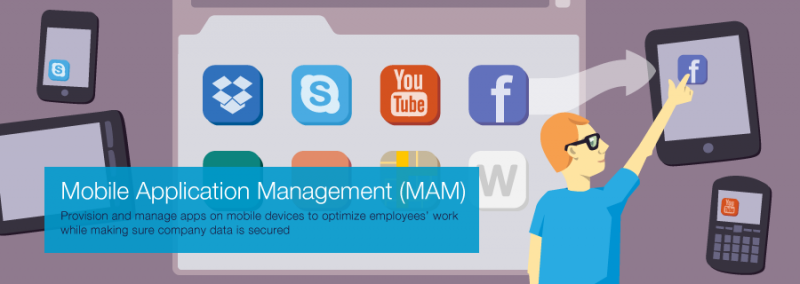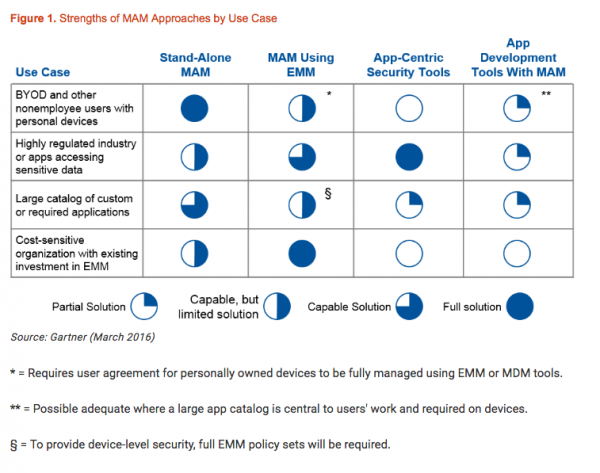
16 June 2016

Employees in today's digital workplace use an average of three different devices in their daily routine, which will increase to five or six devices as technologies such as wearable devices and the Internet of Things (IoT) eventually become mainstream, according to industry research analysts, Gartner.
Many employees are given the autonomy to choose the devices, apps and even the processes with which to complete a task. This is placing an increasing amount of pressure on IT to develop a larger variety of mobile apps in shorter time frames.
Mobile strategists must use tools and techniques that match the increase in mobile app needs within their organisations, explains Gartner.
Current State of MAM and Business Use Cases
In March this year Gartner released an inaugural report assessing the state of mobile application management (MAM).
The report assessed four types of MAM solutions and recommended organisations consider what is best for them on a Use Case basis:

Stand-Alone MAM Tools: Companies that simply want to manage apps, app licenses and operate a branded app store are well-served with stand-alone MAM tools. These tools are also a fit for large populations of non-employees (like contractors) for whom the organisation cannot insist upon installation of an MDM profile. This latter condition can also describe organisations with large BYOD or union worker populations, where enrolling and controlling devices conflict with policy and, in some geographies, legislation. Additionally, for user groups within a population that require only one or two apps for their roles, stand-alone MAM can be a more cost-effective means of distributing and updating these apps when compared to alternatives such as EMM. As described above, they rely on app wrappers and/or SDKs to manage apps.
App Management Using EMM: Organisations with an existing investment in EMM can use the MAM functions of their existing tools but may need to buy an additional license for this capability; no EMM vendor sells stand-alone MAM without MDM. In some cases, the requirement for an on-premises solution may dictate using an EMM suite, as stand-alone MAM suites are most often SaaS-based tools. Further, it is not uncommon to see a stand-alone MAM tool being used to manage one set of devices and EMM used to manage another. Some examples are a need for multiple tiers of administration or additional app-level security or user groups with personally owned devices the organisation has chosen not to manage with traditional EMM. EMM suites provide the flexibility of allowing for native OS-based app management (when devices are enrolled) and stand-alone MAM style management (using wrappers or SDKs) when devices cannot be enrolled. Only EMM suites can manage apps using the native OS APIs.
App-Centric Security Tools: These tools offer MAM or MAM alternatives under the heading of mobile app/mobile data security. Rather than offer traditional policy controls such as "open-in" restrictions or per-app VPN, these tools may take the alternative approach of encrypting mobile data at the file level, obviating the need for encryption-at-rest/encryption-in-motion schemes that depend on securing the storage location or the network connection and minimising concerns about data leakage. The emerging concept of a "self-defending" app that itself, independent of EMM, can detect changes to the operating environment and disable the app or revoke access relies on these tools as well.
App Management Using MADP/Development Tools: If an existing or impending investment is being made in a tool or tools for creating custom mobile apps, these tools may offer MAM capabilities that can be added to the base offering. In some environments, these tools will be used to create the majority of apps that will ultimately be managed. In such cases, the MAM functions included with the development tools already in place can be used for basic app distribution to avoid additional cost. However, these lack the management features of the other three solution categories and may prove inadequate as a substitute for EMM or full-featured MAM.
Related Blogs
3 Strategies to Reduce Telecom Cost